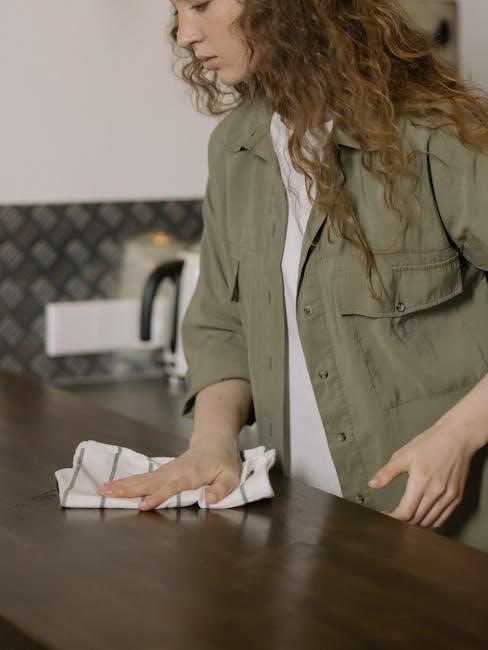Regular hot tub maintenance is essential for ensuring safety, cleanliness, and longevity. A structured hot tub maintenance schedule PDF helps organize daily, weekly, and monthly tasks, making upkeep efficient and stress-free. Proper care includes water testing, sanitizing, and equipment inspections to maintain optimal performance and enjoyment.
Importance of Regular Maintenance
Regular maintenance is crucial for ensuring your hot tub remains safe, clean, and functional. Neglecting upkeep can lead to cloudy water, bacterial growth, and equipment damage. A consistent hot tub maintenance schedule PDF helps prevent these issues by guiding you through essential tasks. Proper care extends the lifespan of your hot tub, enhances user comfort, and protects your investment; By following a structured plan, you can avoid costly repairs and enjoy a hygienic, relaxing spa experience year-round.
Overview of Maintenance Tasks
Maintaining your hot tub involves a series of tasks designed to keep it clean, safe, and functioning properly. Daily tasks include testing water levels and adding sanitizers. Weekly routines involve cleaning filters and checking sanitizer levels. Monthly maintenance includes draining and refilling the hot tub, as well as deep cleaning the filter. Yearly tasks like replacing the filter and inspecting equipment ensure long-term performance. A structured hot tub maintenance schedule PDF provides a clear guide to organize these tasks, ensuring your spa remains in optimal condition for years of enjoyment.
General Safety Tips for Hot Tub Use
Never exceed 104°F water temperature and avoid using the hot tub during storms. Refrain from drinking alcohol and ensure users shower before entering. Prevent slips by using non-slip surfaces and limit sessions to 15 minutes for safety.
Temperature Guidelines
Always maintain your hot tub temperature below 104°F to ensure user safety. Exceeding this temperature can lead to health risks, including dizziness and dehydration. The ideal range for relaxation is between 98°F and 104°F, but adjust based on comfort. For children or sensitive individuals, keep it below 98°F. Regularly monitor the temperature to prevent overheating, especially before use. This guideline helps protect users and maintains the hot tub’s efficiency. Proper temperature control is crucial for both safety and enjoyment, ensuring a pleasant experience for everyone.
Precautions During Use
Avoid consuming alcohol or using the hot tub during rainstorms or lightning. Shower with soap before entering to maintain clean water. Limit sessions to 15 minutes and avoid overheating; Individuals with medical conditions, such as heart issues or pregnancy, should consult a doctor before use. Never leave children unsupervised and ensure all users are in good health. Stay hydrated and exit if feeling dizzy or uncomfortable. These precautions ensure a safe and enjoyable experience for everyone using the hot tub.
Slip and Fall Prevention
Prevent slips and falls by installing anti-skid treads or rubber mats around the hot tub. Ensure the surrounding area is dry and well-lit. Use non-slip surfaces on steps and platforms. Keep the hot tub deck clear of clutter or water. Consider adding handrails for extra stability. Supervise children and ensure all users enter and exit carefully. Regularly inspect the area for hazards and address them promptly. These measures significantly reduce the risk of accidents, ensuring a safer environment for everyone enjoying the hot tub.

Water Care Basics
Proper water care ensures clean, safe, and enjoyable hot tub use. Maintain balanced pH levels, use sanitizers, and regularly test water chemistry to prevent issues. Consistent upkeep is key to clear, hygienic water and optimal equipment performance, enhancing your relaxation experience while safeguarding health and extending the lifespan of your hot tub.
Understanding Water Chemistry
Water chemistry is crucial for maintaining a safe and enjoyable hot tub experience. It involves balancing pH levels, alkalinity, and calcium hardness to prevent corrosion and skin irritation. Sanitizers like chlorine or bromine are essential to kill bacteria and contaminants. Regular testing ensures optimal levels, preventing issues like cloudy water or unpleasant odors. Proper chemical balance also protects equipment from damage, extending the lifespan of your hot tub. A well-maintained water chemistry creates a clean, hygienic environment for relaxation and wellness.
Testing Water Levels
Testing water levels is a critical part of hot tub maintenance. Use test strips or a droplet test kit to measure pH, alkalinity, and calcium hardness regularly. Proper pH levels (7.2–7.8) ensure comfort and prevent eye irritation. Alkalinity stabilizes pH, while calcium hardness protects equipment from corrosion. Imbalanced levels can cause cloudy water, skin irritation, or damage to the hot tub. Regular testing ensures a safe and hygienic environment, preventing issues before they arise. Refer to your maintenance schedule PDF for frequency and adjustment guidelines to maintain optimal water quality.
Common Water Issues and Solutions
Cloudy water, foam, and unpleasant odors are common hot tub issues. Cloudy water often results from high pH levels, lack of sanitizers, or dirt. Shock treatments and adjusting pH can resolve this. Foam is typically caused by excess oils or lotions, requiring foam reducers. Odors may indicate improper sanitizer levels or bacteria buildup, addressed by adjusting chemicals. Regular testing and maintaining proper water chemistry prevent these issues. Refer to your maintenance schedule PDF for detailed solutions and tips to keep your hot tub water clear and fresh;
Daily Maintenance Schedule
Test water levels, add sanitizers as needed, and perform a quick clean of the hot tub area to ensure cleanliness and safety for daily use.
Testing water levels is crucial for maintaining a safe and clean hot tub environment. Use test strips to monitor pH, alkalinity, and sanitizer levels daily before use. Ensure pH levels range between 7.2 and 7.8 to prevent skin irritation and equipment damage. Alkalinity should be between 80-120 ppm to stabilize pH levels. Sanitizer levels, such as chlorine or bromine, should be within the recommended range (1-3 ppm) to effectively kill bacteria. Adjust chemicals as needed to maintain balance and prevent issues like cloudy water or corrosion. Regular testing ensures optimal water quality and user safety, making it a cornerstone of daily maintenance routines.
Adding Sanitizers
Sanitizers are essential for maintaining clean and safe water in your hot tub. Chlorine or bromine are common sanitizers used to kill bacteria and contaminants. Add sanitizers after testing water levels, following the manufacturer’s instructions. Aim for sanitizer levels between 1-3 ppm. Shock treatments should be applied weekly to eliminate built-up contaminants. Always dissolve granular sanitizers in water before adding them to the hot tub to avoid damage. Regularly monitor sanitizer levels to ensure effective water purification and prevent issues like cloudy water or odors. Consistent use of sanitizers keeps your hot tub clean and ready for use.
Quick Clean of the Hot Tub Area
A daily quick clean ensures a hygienic and inviting hot tub environment. Use a non-abrasive cleaner and a soft sponge to wipe down the hot tub surfaces, paying attention to areas around jets and handles. Remove any visible debris or dirt from the water’s surface using a skimmer. Regularly inspect and clean the surrounding area, including the cover and steps, to prevent slips and falls. Keep the hot tub cover clean and dry when not in use to avoid mold growth. A clean hot tub area enhances safety and enjoyment for all users.

Weekly Maintenance Schedule
- Clean the filter to ensure proper water circulation and sanitation.
- Check sanitizer levels and adjust as needed to maintain safe water conditions.
- Apply shock treatment to eliminate contaminants and keep water clear.
This routine ensures consistent water quality and equipment performance;
Cleaning the Filter
Cleaning the filter is a crucial weekly task to maintain water quality. Start by rinsing the filter with a hose to remove visible debris. For deeper cleaning, soak the filter in a filter cleaner solution, then rinse thoroughly. Replace the filter in the spa and ensure it’s securely fitted. Regular cleaning improves water circulation and sanitation efficiency. Replace the filter annually to maintain optimal performance. This simple process keeps your hot tub running smoothly and ensures clean, safe water for users.
Checking Sanitizer Levels
Checking sanitizer levels is vital for maintaining clean and safe water. Use test strips to measure sanitizer concentration, aiming for levels between 1-3 ppm for chlorine and 3-5 ppm for bromine. Test the water after adding sanitizers and before each use. Imbalanced levels can lead to health risks or equipment damage. Adjust levels as needed, ensuring they remain within recommended ranges. Regular monitoring prevents bacteria growth and keeps the water clear and safe for users. Consistent checks are essential for optimal hot tub performance and longevity. Always follow the manufacturer’s guidelines for accurate testing and adjustments.
Shock Treatment Application
Shock treatment is essential for oxidizing contaminants and breaking down waste in the water. Apply shock treatment weekly or after heavy use to maintain water clarity and safety. Always follow the manufacturer’s instructions for dosage and timing. Test the water before and after treatment to ensure proper oxidation; Allow the jets to run for 10-15 minutes after adding the shock treatment. This process helps eliminate organic matter, prevents cloudy water, and ensures sanitizers work effectively. Regular shock treatments are crucial for a clean, safe, and enjoyable hot tub experience. Consistency is key to maintaining optimal water quality.

Monthly Maintenance Schedule
Drain and refill the hot tub to refresh the water. Clean the surface with non-abrasive products. Inspect equipment for proper function and wear.
Draining and Refilling the Hot Tub
Draining and refilling your hot tub monthly ensures fresh, clean water. Start by turning off the power and attaching a hose to the drain valve. Allow the water to completely empty. Clean the tub with a non-abrasive cleaner to remove dirt and stains. Rinse thoroughly before refilling. Use a garden hose to refill, and balance the water chemistry afterward. Regular draining prevents bacteria buildup and maintains water clarity for a safe and enjoyable experience.
Cleaning the Hot Tub Surface
Cleaning the hot tub surface monthly ensures a pristine and hygienic environment. Use a non-abrasive cleaner specifically designed for your tub’s material, such as acrylic or fiberglass. Wet the surface, apply the cleaner, and scrub gently with a soft sponge. Rinse thoroughly with a garden hose to remove all residue. Regular cleaning prevents dirt buildup and maintains the surface’s appearance. For vinyl covers, use a vinyl conditioner to keep them supple and protect against cracking. This routine ensures longevity and keeps your hot tub looking like new.
Inspecting Equipment
Inspecting your hot tub’s equipment monthly ensures optimal performance and longevity. Check the pumps, heater, and electrical connections for any signs of wear or damage. Verify that all components are functioning correctly and efficiently. Look for leaks, corrosion, or loose connections that could lead to malfunctions. Ensure the cover is in good condition and properly sealed. Regular inspections help prevent breakdowns, maintain safety, and extend the lifespan of your hot tub’s essential systems. Addressing issues early saves time and money while ensuring continuous enjoyment of your spa.
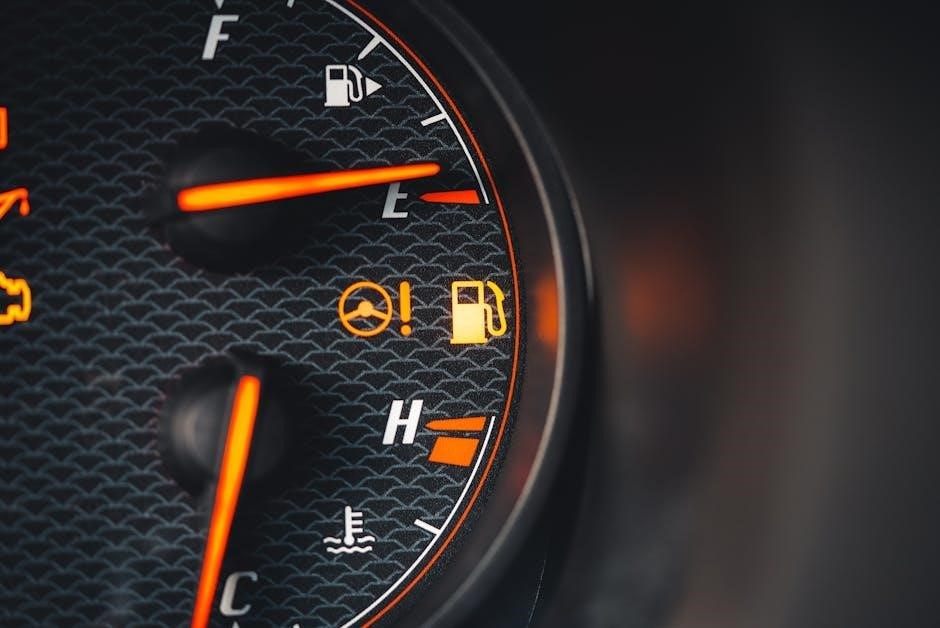
Quarterly Maintenance Schedule
Perform deep filter cleaning, inspect the cover for damage, and check for leaks. Apply shock treatments and ensure all equipment is functioning properly for optimal performance.
Deep Cleaning the Filter
Deep cleaning the filter every quarter ensures optimal water flow and filtration efficiency. Remove the filter and rinse it with a hose to eliminate debris. Soak it in a solution of water and filter cleaner for several hours. After soaking, rinse thoroughly and allow it to dry before reinstalling. Regular deep cleaning prevents buildup and extends the life of your filter, ensuring clean and clear water for a better spa experience.
Inspecting the Cover
Inspecting the hot tub cover quarterly is crucial for maintaining energy efficiency and water cleanliness. Check for cracks, tears, or signs of wear. Ensure the vinyl is clean and free from mold or mildew. Apply a cover treatment every 2-3 months to protect the material and prevent deterioration. A well-maintained cover reduces heat loss, lowers energy costs, and keeps contaminants out, ensuring your hot tub remains in excellent condition and ready for use.
Checking for Leaks
Checking for leaks is a vital part of your hot tub maintenance schedule. Inspect the spa and its equipment regularly for any signs of water seepage or damage. Pay attention to connections, pipes, and seals. Even small leaks can lead to significant water loss and damage over time. If you notice any leaks, address them promptly to prevent further issues and ensure your hot tub operates efficiently. Regular inspections help maintain the integrity of your spa and extend its lifespan.
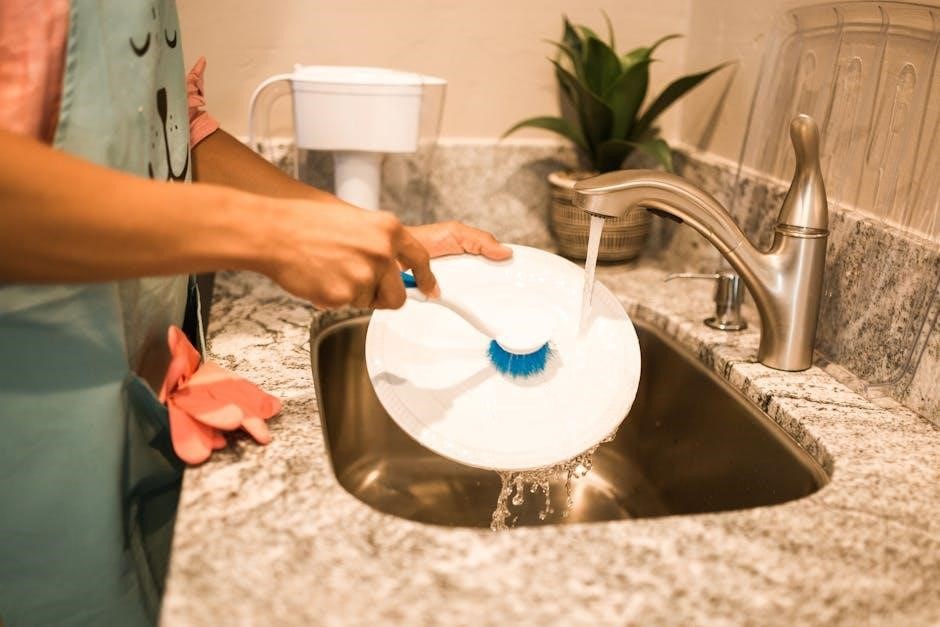
Yearly Maintenance Schedule
Annually, replace the filter and inspect the cover for wear. Schedule professional servicing to ensure all components are functioning properly and safely.
Replacing the Filter
Replacing the filter annually ensures optimal water flow and sanitation. Turn off the power, locate the filter, and remove it. Clean or replace it as needed. Use a garden hose to rinse thoroughly. Install a new filter if it’s damaged or worn. Regular replacement prevents clogging and maintains water clarity. Always refer to your hot tub maintenance schedule PDF for specific instructions tailored to your model.
Inspecting and Replacing the Cover
Inspect the cover every 3 months for signs of wear, cracks, or mold. Clean it regularly with a mild detergent and protect it with a cover treatment. If damaged, replace it immediately to maintain heat efficiency. A well-maintained cover reduces energy costs and keeps your hot tub clean. Always follow the guidelines in your hot tub maintenance schedule PDF for care and replacement instructions to ensure longevity and performance.
Professional Servicing
Annual professional servicing is crucial for maintaining your hot tub’s optimal performance. A certified technician will inspect electrical components, heater elements, and pumps to ensure everything functions safely and efficiently. They will also check for any potential issues before they escalate. Regular professional servicing extends the lifespan of your hot tub and ensures it operates within safety standards. Always refer to your hot tub maintenance schedule PDF for recommended timing and specific service requirements.
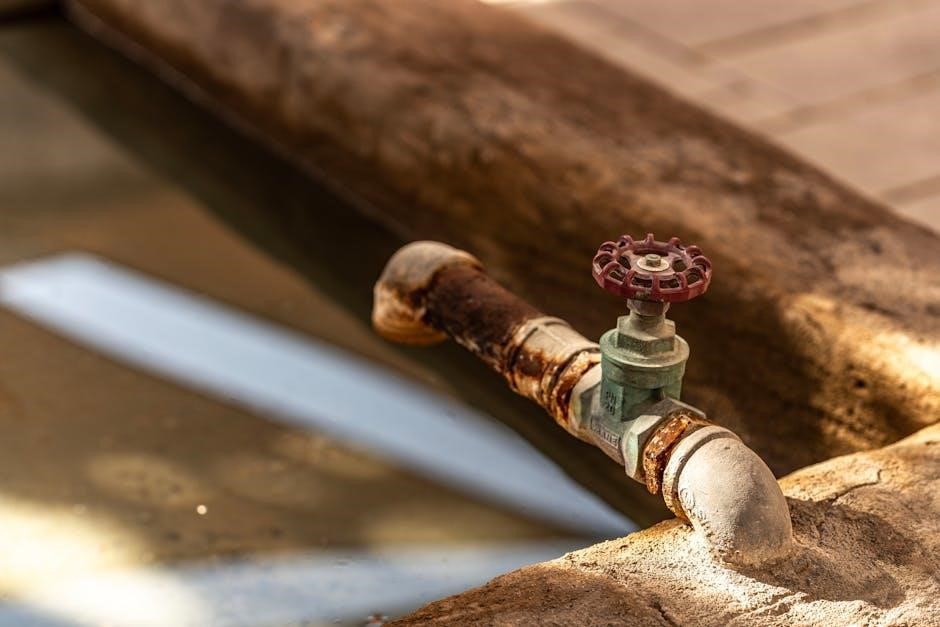
Equipment Maintenance
Regular checks of pumps, heaters, and filters ensure optimal performance. Inspect for wear and tear, and replace parts as needed to prevent issues and extend lifespan.
Filter Care and Replacement
Proper filter maintenance ensures clean water and efficient system operation. Rinse filters weekly with a hose and deep clean quarterly using specialized products. Replace filters annually or as recommended to maintain optimal water flow and filtration efficiency. Regular cleaning prevents debris buildup, while replacements guarantee your hot tub runs smoothly and effectively. A clean filter also reduces strain on the pump, prolonging equipment lifespan. Always follow manufacturer guidelines for cleaning and replacing filters to ensure peak performance.
Heater and Pump Maintenance
Regular inspection of the heater and pump is crucial for efficient hot tub operation. Check for leaks, corrosion, and scale buildup, and descale as needed. Lubricate moving parts annually to ensure smooth operation. Professional servicing should be scheduled yearly to inspect internal components and replace worn parts. Proper maintenance extends the lifespan of these critical systems, ensuring consistent heat and water circulation. Always follow manufacturer guidelines for specific maintenance procedures to prevent damage and maintain optimal performance.
Cover Maintenance Tips
Regularly clean the hot tub cover with mild soap and water, paying attention to the underside to prevent mildew buildup. Avoid using abrasive cleaners or scrubbers, as they may damage the vinyl. Treat the cover with a vinyl protector every 2-3 months to maintain its condition. Ensure the cover is properly secured when not in use to prevent debris accumulation. Inspect the cover for signs of wear or damage and address them promptly. Replace the cover if it becomes cracked or no longer fits securely to maintain heat efficiency and safety.

Chemical Maintenance
Chemical maintenance ensures clean, safe water. Use sanitizers like chlorine or bromine, and balance pH levels between 7.2-7.8 for optimal comfort and hygiene. Shock treatments remove contaminants, keeping water clear and fresh. Regular testing prevents imbalances and maintains equipment efficiency. Always follow the manufacturer’s guidelines for adding chemicals to avoid overuse and potential health risks. A well-maintained chemical routine ensures a clean, safe, and enjoyable hot tub experience. Proper chemical maintenance also prolongs the lifespan of your hot tub and its components. Stay consistent with your schedule for best results. A hot tub maintenance schedule PDF can help you keep track of chemical levels and tasks, ensuring everything runs smoothly. By adhering to these guidelines, you can enjoy your hot tub with peace of mind, knowing the water is safe and clean. Remember, consistent chemical maintenance is key to preserving your investment and ensuring user safety. Always store chemicals in a cool, dry place, away from direct sunlight and children, to maintain their effectiveness and prevent accidents. Testing water regularly is crucial, as it allows you to adjust chemical levels promptly, avoiding issues like cloudy water or bacterial growth. A hot tub maintenance schedule PDF provides a clear, structured plan to follow, making it easier to stay on top of your chemical maintenance routine. This ensures your hot tub remains a relaxing and healthy environment for years to come.
Types of Sanitizers
Common hot tub sanitizers include chlorine, bromine, and ozone systems. Chlorine is effective but can cause eye irritation. Bromine is gentler on skin but requires a higher initial investment. Ozone systems reduce chemical use but may need additional sanitizers. Natural alternatives like mineral sanitizers are eco-friendly and low-maintenance; Each type has unique benefits and drawbacks, so choosing the right one depends on personal preference and usage frequency. A hot tub maintenance schedule PDF can help track sanitizer levels and ensure proper dosing for clean, safe water. Regular testing and adjustments are crucial for optimal results.
Shock Treatments Explained
Shock treatments are essential for eliminating contaminants like sweat, oils, and bacteria in hot tub water. They oxidize organic matter, preventing cloudy water and odors. Typically, non-chlorine shocks are recommended for regular use, while chlorine shocks are stronger but less frequent. Apply 1 tablespoon per 500 gallons after heavy use or weekly. Always follow the product instructions and test water levels afterward. Shock treatments are a critical part of maintaining clean, safe, and clear water, ensuring a healthy and enjoyable soaking experience. They are a key component in any hot tub maintenance schedule PDF.
Balancing pH Levels
Proper pH balance is crucial for hot tub water quality. Aim for a pH range of 7.2-7.8 to protect equipment and prevent skin irritation. Test pH levels daily using test strips or kits. Adjust with pH increaser or decreaser as needed. Imbalanced pH can cause cloudy water or damage to pumps and heaters. Regular testing ensures optimal comfort and system efficiency, making it a vital part of any hot tub maintenance schedule PDF. Adjustments should be made gradually, allowing time for chemicals to dissolve and mix evenly before retesting.
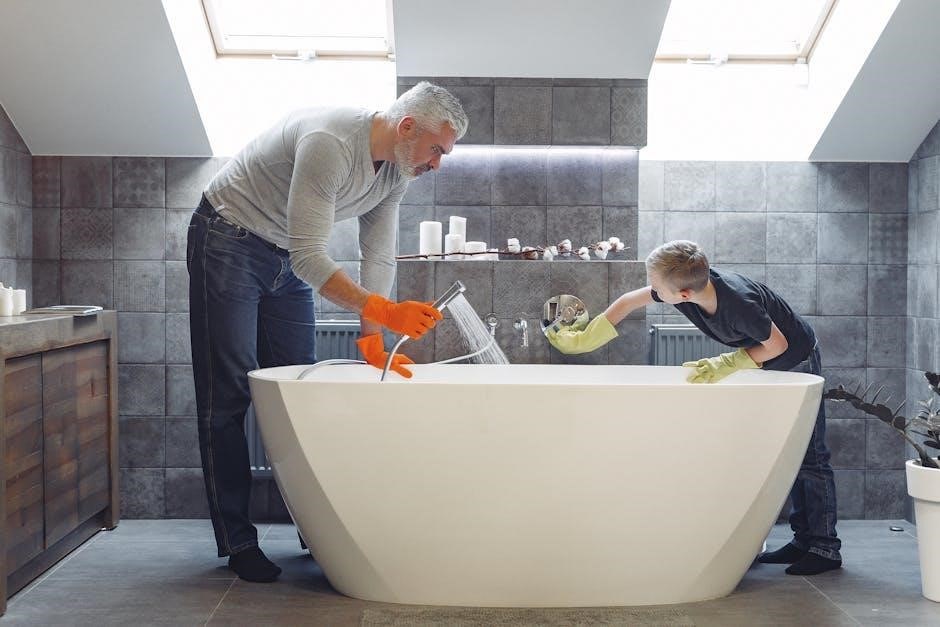
Troubleshooting Common Issues
Addressing cloudy water, excessive foam, and unpleasant odors promptly ensures a safe and enjoyable hot tub experience. Regular maintenance helps identify and resolve these issues efficiently.
Cloudy Water Solutions
Cloudy water in your hot tub is often caused by improper chemical levels, poor filtration, or excessive contaminants. To resolve this, test and adjust your pH levels, ensuring they fall between 7.2 and 7.8. Shock treatments can help eliminate organic matter. Clean or replace the filter if it’s clogged, as a dirty filter cannot efficiently clear the water. Regularly check sanitizer levels and adjust as needed to maintain clarity. Prevent future cloudiness by rinsing swimsuits and showering before use to reduce contaminant introduction. Refer to your maintenance schedule for consistent water care.
Foam Reduction Tips
Foam in your hot tub is often caused by body oils, lotions, or high sanitizer levels. To reduce foam, use a defoamer specifically designed for hot tubs. Regularly shock the water to break down organic contaminants. Ensure proper filtration by cleaning or replacing the filter as needed. Maintain balanced pH levels between 7.2 and 7.8 to prevent excessive foam formation. Additionally, rinse swimsuits and encourage pre-soak showers to minimize contaminants. Refer to your maintenance schedule for consistent care and clear water enjoyment.
Odor Elimination
Unpleasant odors in your hot tub often stem from bacteria growth or chemical imbalances. Regular shock treatments help eliminate organic matter causing odors. Use sanitizers like chlorine or bromine to maintain clean, fresh water. Clean the filter regularly, as a dirty filter can harbor bacteria. Ensure proper pH and alkalinity levels to prevent odor-causing imbalances. Wipe down surfaces with a non-abrasive cleaner and rinse thoroughly. For persistent odors, check for bacteria buildup in pipes and jets, and consider using oxygen-based cleaners. A well-maintained hot tub should always smell clean and fresh.

Additional Resources
Download a hot tub maintenance schedule PDF for a comprehensive guide. Find printable checklists, water care tips, and troubleshooting resources to keep your spa in top condition.
Hot Tub Maintenance Checklist
A comprehensive hot tub maintenance checklist ensures all tasks are completed on time. Daily checks include testing water levels and adding sanitizers. Weekly tasks involve cleaning filters and shocking the water. Monthly duties include draining, refilling, and inspecting equipment. Quarterly, deep clean filters and inspect for leaks. Annually, replace filters and schedule professional servicing. Refer to a hot tub maintenance schedule PDF for detailed instructions and frequencies to keep your spa clean, safe, and functioning optimally year-round. Use printable checklists for easy tracking and consistency.
Where to Find Maintenance Schedule PDF
Download a hot tub maintenance schedule PDF from trusted sources like manufacturer websites, online marketplaces, or hot tub supply retailers. Many brands offer free, downloadable guides tailored to their specific models. Additionally, websites like Home Depot or Amazon provide comprehensive maintenance schedules. Hot tub forums and specialty stores also share detailed PDF guides. These resources are designed to help you track and organize upkeep tasks efficiently, ensuring your spa remains in peak condition. Always refer to a reliable source for accurate and detailed maintenance instructions.
Recommended Reading
For deeper insights into hot tub care, explore books like “The Hot Tub Bible” or “Spa Repair and Maintenance”. These guides offer detailed advice on water chemistry, equipment upkeep, and troubleshooting. Additionally, online forums and blogs from hot tub enthusiasts provide practical tips and real-world experiences. Check out resources like “Hot Tub Chemistry 101” for mastering sanitizer use. Reading these materials will enhance your knowledge and ensure your spa remains a relaxing, safe haven for years to come. Always prioritize credible sources for accurate information.
Proper hot tub maintenance is key to ensuring a safe, clean, and enjoyable experience. By following a structured schedule and understanding water care basics, you can extend the life of your spa. Regular tasks like testing levels, cleaning filters, and inspecting equipment prevent issues and enhance performance. Remember, consistency is crucial. Whether you’re a new owner or a seasoned user, staying committed to maintenance ensures your hot tub remains a relaxing and rejuvenating space for years to come. Always refer to your hot tub maintenance schedule PDF for guidance and enjoy the benefits of your spa with confidence.
